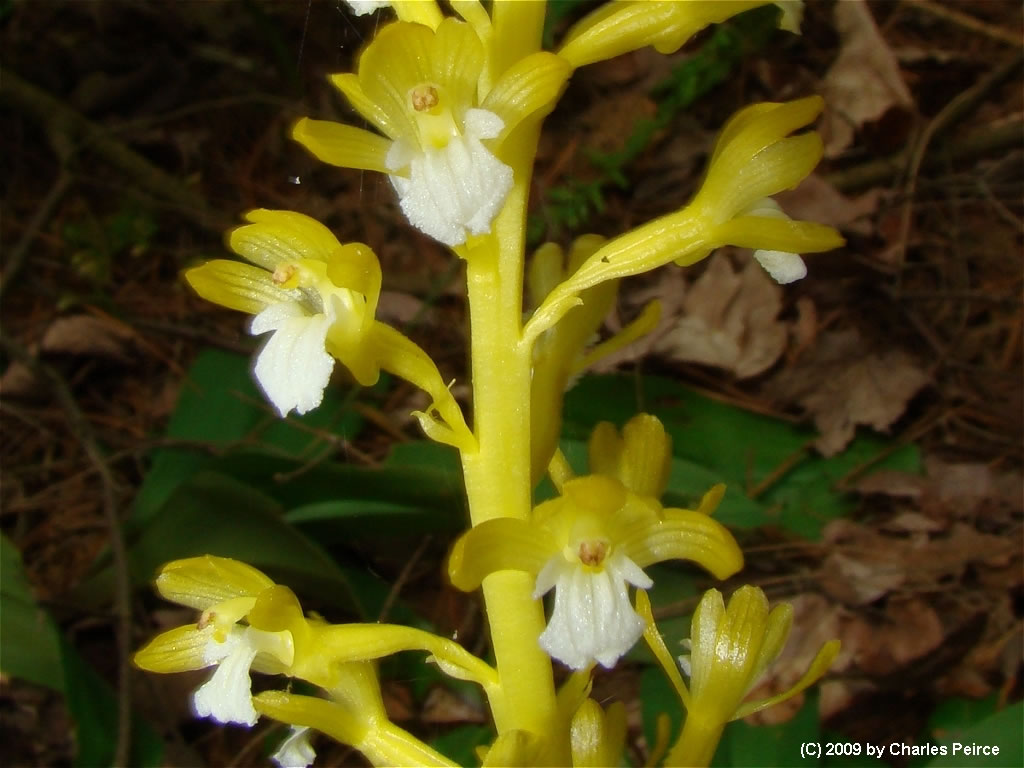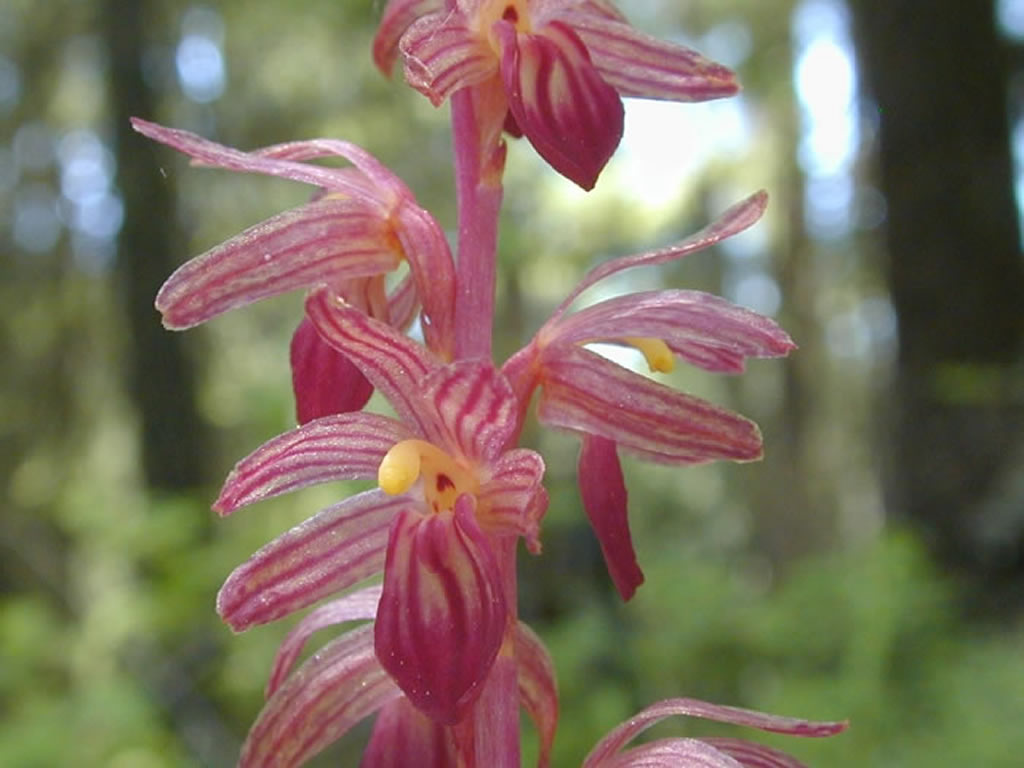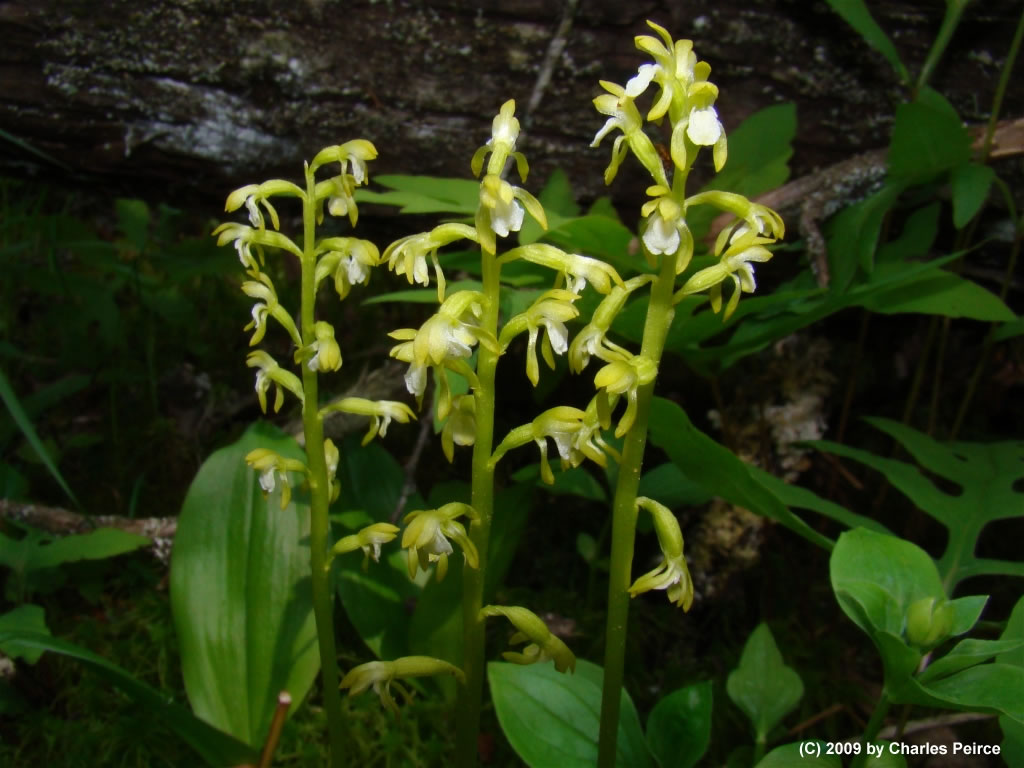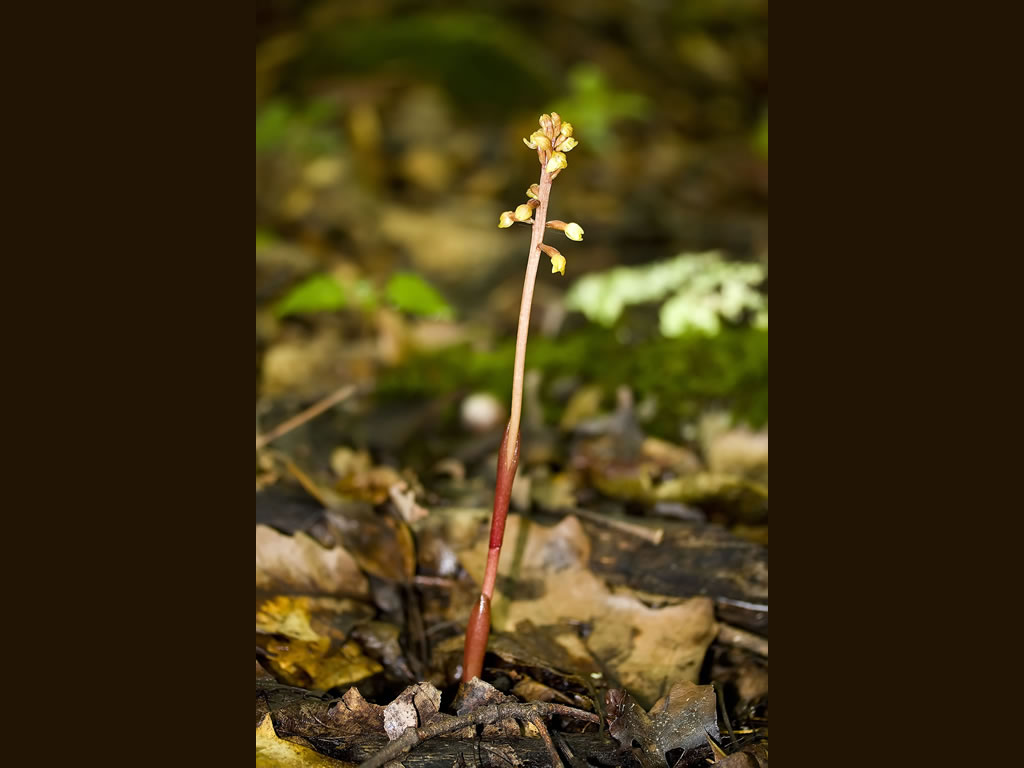Subtle Beauty
For many a forest hiker it is easy to pass by a coralroot orchid without noticing its presence. The beauty of a coralroot orchid can be very subtle and blend into the background of a shady forest floor of brown leaves and/or needles. Many a wildflower enthusiast has a story to tell of how they discovered a coralroot orchid when they sat down to tie a shoelace, take a drink or just sit for a minute or two to take in the beauty of their surroundings. Once discovered the subtle beauty of the coralroot orchids becomes more apparent.
The coralroot orchids, in the genus Corallorhiza, possess a subtle beauty. Coralroot orchids come in a variety of muted colors; varying shades of reds, purples, yellows, whites, tans, browns and greens. The differences in coloration from one population to another within the same species or within a population may be due to a number for factors:
- Genetic differences controlling the molecular structures of the flavenoid pigments and colorless co-pigments can differ from one population to another, which result in a myriad of co-pigmentations;
- The uptake of specific metal ions;
- Whether the soil is acidic or alkaline; and,
- Pigment intensity, which is affected by other environmental conditions.
Yellow coralroot orchids (Corallorhiza sp. forma flavida) are the result of a commonly recurring genetic mutation in which the flavenoid pigments, anthocyanins, are absent. This absence of anthocyanins allows for the yellow xanthophylls, a carotenoid pigment to become more readily visible. Except for Corallorhiza striata all yellow coralroot orchids have a white lip (labellum) indicating the presence of anthoxanthins, a flavenoid pigment in the white lip.
Chlorophyll a and chlorophyll b give rise to the green color forms of Corallorhiza trifida, C. maculata, C. wisteriana and C. odontorhiza; the yellow-green forms come from a combination of carotenoides with chlorophyll and the absence of flavenoids. Early on in the study of heterotrophs, it was assumed that the vast majority were achlorphyllous (without chlorophyll). In 1997, Cummings and Welschmeyer demonstrated that many heterotrophs, including Corallorhiza maculata contained chlorophyll. It has been assumed that heterotrophs developed from autotrophs. Their research did not prove that photosynthesis was occurring, only that a small amount of chlorophyll is still present in the species they tested.
The coloration of coralroot orchids is influenced by the presence or absence of cellular metal ions, cellular pH, and how the flavenoid pigments are physically structured within the cell. The pH of the soil can also influence the phenotypic expression of the anthocyanins, and colorless co-pigments. A more acidic soil pH allows aluminum, iron, and magnesium cations to become more soluable and thus more readily taken up by the plant. When the metal cations attach to the anthocyanins and colorless co-pigments, the coralroot orchid’s coloration will be less red and a darker, more intense reddish-purple to violet.
The myriad of colorations in the coralroot orchids may be dramatic or extremely subtle - therein is the inherent beauty of the coralroot orchids.









